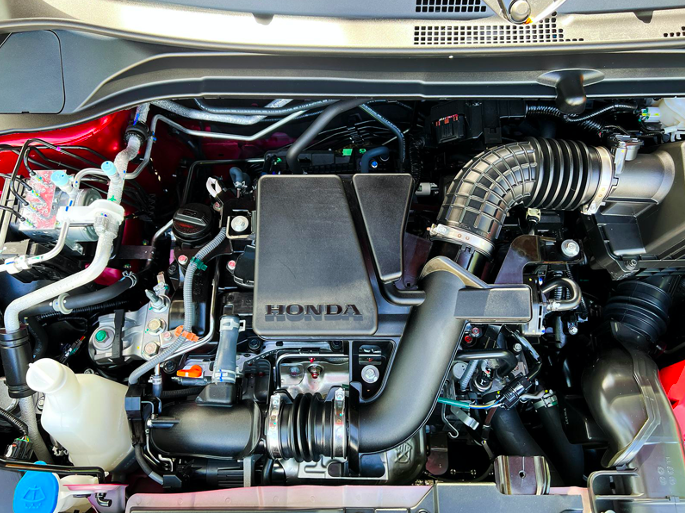There’s been a major overhaul for Honda’s subcompact crossover. The all-new HR-V has arrived, featuring a more mature look, new engine options, and Honda Sensing to help you in your everyday drive. The best thing about it is the two variants share a lot of similarities that you might not be enticed to get the top-of-the-line model anymore. Of course, that remains to be seen. For now, let’s dive into the details of this new crossover from Honda.


At a glance, the most striking difference is the new look. Honda dropped the Solid Wing Face motif from before and now employs a new hexagonal grille with two designs – mesh for the V, and horizontal bar-type for the S trim. It’s flanked by automatic LED headlights with DRLs that’s standard for both trims. They also have 17-inch wheels that have the same design but different finishes for each variant, and an all-LED taillight assembly featuring a lightbar that runs across the tailgate. The V separates itself by having two functional exhaust pipes with chrome finishes, a few aesthetic flairs in some areas of the car, and by having power folding side mirrors.

Honda has done away with the 1.8L VTEC for the HR-V. It now has a 1.5L DOHC VTEC for the S trim that makes 119 horsepower and 145 Nm of torque. The V variant gets a 1.5L DOHC Turbo VTEC engine that has 175 horsepower and 240 Nm of torque with both paired to a CVT.


Continuing with the cabin talk, it has a new look that’s more conventional. Gone are the air vents in front of the front passenger. They also didn’t bother putting the chrome strip that’s seen in the all-new Civic and instead utilized usual dash materials with the 8-inch touchscreen breaking the layout into two. What’s different are the side air vents on each end of the dashboard, allowing front passengers to point the air instead directly to the rear occupants. Also, the headunit can now be accessed by the USB port below the air controls; no more hanging USB cable by the glove box.


Standard interior features include electronic parking brake with auto brake hold, 8-inch touchscreen with Apple and Android, ULTR seats, 6 speakers, single zone automatic climate control, rear air vents, and push start button. The V trim gets additional leather upholstery including the shifter and steering wheel, 7-inch digital gauge display, auto-dimming rear view mirrors, and 2 USB ports under the rear air vents.

Aside from aesthetic changes in the rear, Honda even revised the cover for the all-new HR-V. It’s now attached to the tailgate itself and not hanging above the cargo area. There’s no official figure for its capacity but in visual checking it seems bigger than the outgoing model that has 431 liters of space with the second row up.

Safety was also improved in the all-new HR-V and they share similar bits in this area. Four airbags, Agile Handle Assist, Hill Start Assist, Hill Descent Control, speed sensing door locks and keyless entry system. The two variants also receive Honda Sensing that include Adaptive Cruise Control, Low Speed Follow, Collision Mitigation Braking System, Lane Keep Assist, Road Departure Mitigation, Auto High Beam, and Lead Car Departure Notification

You can get the all-new Honda HR-V starting at P1,250,000 for the S trim, while the V Turbo is at P1,598,000. No RS variant this time around for Honda’s relatively smallest crossover. Colors include Ignite Red and Meteoroid Gray, with Platinum White Pearl available for an additional fee. Opal White Pearl is exclusive to the V Turbo trim for an added cost. It’s now available at all Honda dealerships.












